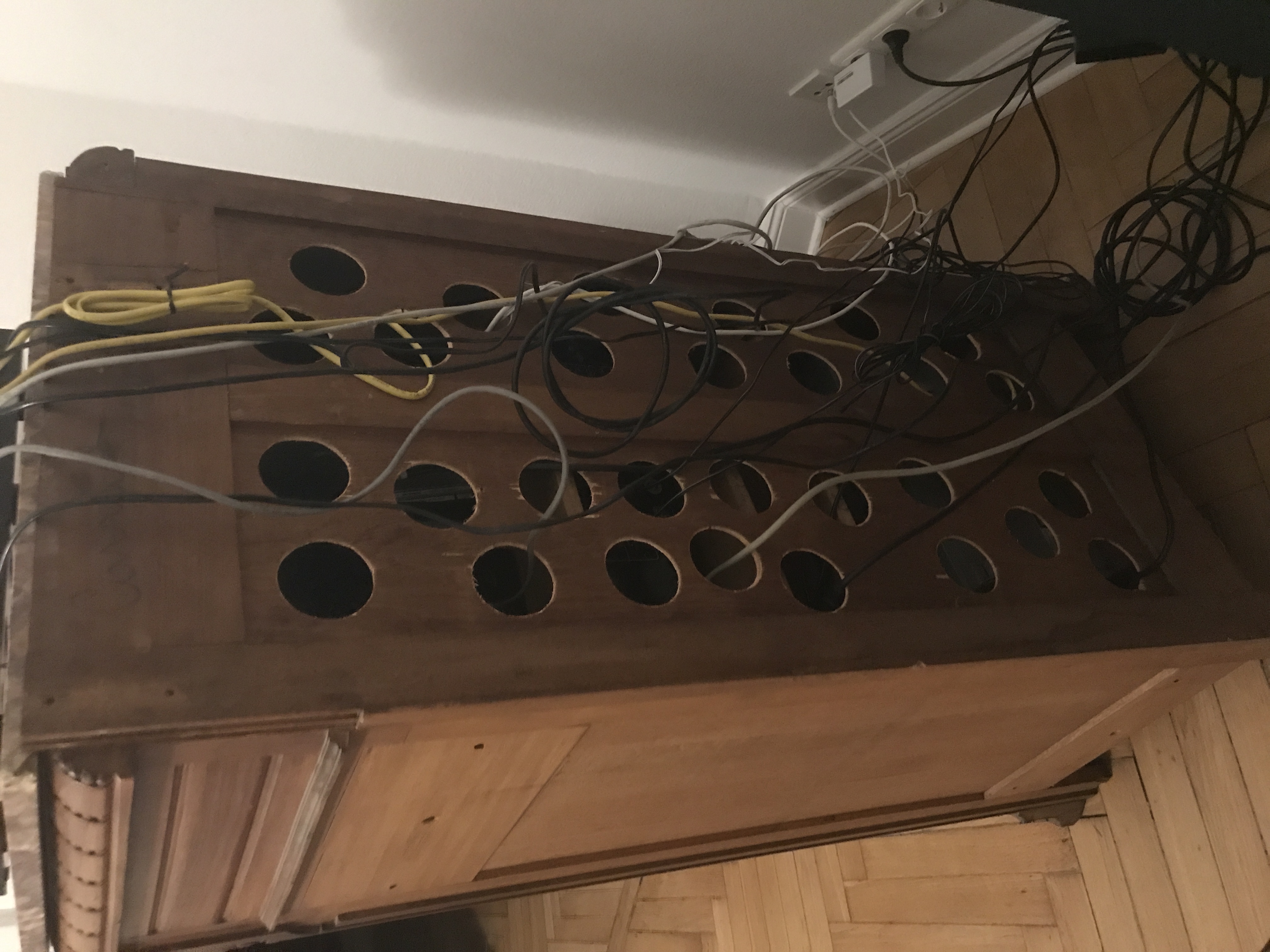My Own Private Data Center
This post was written on 2023-01-02 and belongs to a series of catch-up articles.
I love my home datacenter.


Sometime during 2016 I bought this piece of fourniture for 20€ on a flee market.
I had a bunch of tech gear lying around in the living room and my wife was pushing for me to tidy up my setup. You can see my hi-fi equipment, the openwrt router, the NAS, the laser printer and a Dell laptop to self-host my services, including this blog 😉
I started looking for second-hand shelves and into home setups on blogs but wouldn’t fall in love with any.
When I saw this abandonned piece on the flee market, I saw the opportunity for my rack at home. I already had a marble slab of approximately the right size. I only needed to drill some holes in the back for cables and ventilation.
The whole sideboard had fallen from a truck and was broken in pieces. I thought I could just pick up the last unbroken piece but a man arrived and proposed to sell it.
I’m very bad at construction and manual work in general. So I started with buying the hole saw.
It wasn’t until 2018, after moving to another place, that I finally executed.

Sure the rack is not fire-proof and there’s no cooling, but I’m more than happy with the result.
Disgression
[Possible candidate for its own post]
Quick tip: use an internal VPN on a cheap VPS to expose self-hosted services.
When I started self-hosting, I configured my ISP’s router port-forwarding options. This compelled me to use my registrar’s dynamic DNS as my home IP would change occasionally.
After moving, I believe because my ISP was (is still!) using Carrier Grade NAT, DynDNS was pretty much impossible. Also I believe my ISP’s did provide DynDNS integration out of the box, but not for my registrar. I would also need to reconfigure my new ISP router with all port-forwarding rules which had become a bit complex.
So I resorted to setup a VPN between some home server and a cheap linux
VPS. iptables would do the forwarding.
This solution has multiple other benefits:
-
the IP only changes when I change the VPS, which so far only happened when the datacenter hosting my VPS burnt.
-
the networking/forwarding configuration is managed with git and saltstack and is resilient to accomodation changes.
-
a VPS enables me to quickly experiment with stuff on the internet or test connectivity of stuff on the internet.